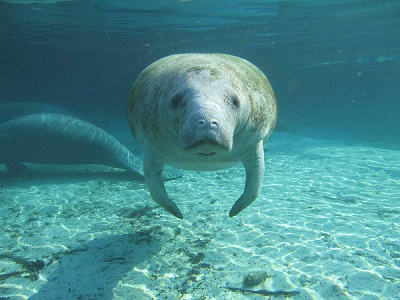Unit 10: Florida's Living Treasures
Unit 10: Florida's Living Treasures

Unit 10: Florida's Living Treasures
Unit 10: Florida's Living Treasures
Basic Facts About Florida Manatees
The Florida manatee, Florida's state marine mammal, is a large aquatic relative of the elephant. It is grayish brown and has thick, wrinkled skin on which algae often grows. Its front flippers help it steer, or sometimes crawl, through shallow water. It also has powerful, flat tails that help propel it through the water. Despite their small eyes and lack of outer ears, manatees are thought to see and hear quite well.
Like other grazing animals, Florida manatees are essential in influencing plant growth in the shallow rivers, bays, estuaries, canals, and coastal waters they call home.
Diet
- Manatees are herbivores with a diet consisting primarily of sea grasses and freshwater vegetation.
Population
- Although there is no precise census of Florida manatees, today's population is approximately 6,000 individuals.
Range & Habitat
- Manatees live in the warm waters of shallow rivers, bays, estuaries, and coastal waters. They rarely venture into waters below 68 degrees Fahrenheit.
- Manatees take up residence primarily in Florida's coastal waters during winter. Some individuals migrate as far north as the Carolinas or as far west as Louisiana in summer. In recent years, manatees have swum as far north as Cape Cod, Massachusetts,
Behavior
- Well known for their gentle, slow-moving nature, manatees have also been known to body surf or barrel roll when playing. They usually rest and feed often. Manatees communicate by squealing underwater to demonstrate fear, stress, or excitement.
Reproduction
- Calves are born weighing between 60 and 70 pounds and measuring about 3-4 feet long. They nurse underwater.
Vocabulary
Lesson Reading

